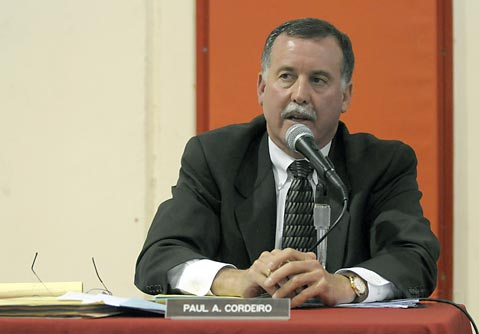Communication Breakdown
Details Emerge in Student's Battle Against Carp High Mascot

The uproar that resulted from the effort to eliminate Carpinteria High School’s mascot, the Warrior, made headlines throughout the county, with students, alumni, and school officials alike debating the appropriateness of a symbol that some community members found offensive to Native Americans. Foremost among those objecting was Eli Cordero, a student of Native American descent who presented his feelings about the mascot at a March 2008 school board meeting. While resulting news stories gave voice to many who thought the historic value of the Warrior should supersede the objections, scant details about Cordero’s day-to-day life at school emerged. This changed on October 30, when the U.S. Department of Education’s Office for Civil Rights (OCR) released a letter in response to a complaint by Cordero’s mother, Charisse Matisz-Cordero, that the Carpinteria School District did not adequately respond to retaliation by fellow students against her son. The letter dissects how school officials responded to alleged discrimination, not faulting the school for the way they handled the situation, but nonetheless pointing out how it could have done so differently.

Though Cordero no longer attends a district school, his remaining time at Carp High saw two death threats-one in the form of a student remarking that he wanted to kill Cordero and the other in form of the text “I hope u die” scrawled on a play script Cordero had left in the lunchroom. The OCR report notes that school officials contacted law enforcement in both incidents. In the former case, an interrogation revealed that the student who made the threat did not know who Cordero was. In the latter, law and school officials together concluded that it would be “difficult, if not impossible, to identify the person who made the threat,” according to the report. When OCR staff asked whether officials had reminded the student body that such threats were unacceptable, they allegedly responded that they “did not want to call further attention to the student.” The report continues, “From the point of view of [Cordero] and his family, all they knew was that the school told them nothing could be done.”
The report also notes that Cordero was taunted regularly by his fellow students, some of whom would allegedly look him in the eye and spout slogans like “Warrior spirit never dies” and “Go Warriors.” Cordero never reported incidents, allegedly feeling “there was no point in reporting the daily encounters because he did not think the school would do anything about them.” Though the report mentions no policy violations by the School District, it does imply a breakdown in communication. For example, though district officials did tell campus security to keep an eye on Cordero, the student was unaware of this precaution.
The district must now meet three OCR mandates. First, they must draft a “written guidance” to school staff communicating district policies and precautions included in the Civil Rights Act that protect students from discriminatory or retaliatory actions. They must train school staff in how to enforce these rules and punish offenders. And, thirdly, they must post on the district’s Web site a notice of students’ and parents’ right to “assert or protect the rights of individuals free from discrimination on the basis of race, national origin, sex, or disability.”
“We did everything we could to protect the students,” said District Superintendent Paul Cordeiro of the report. Regarding the communication problems that the report hints at, Cordeiro said, “I’m not going to comment except to say that we made the best judgments at the time : and that involves some judgment calls that had [Cordero’s] safety in mind.” Speaking as a representative for United Carpinterians, an organization created to foster education and understanding of Native American issues, Toni Stuart offered this comment on the OCR letter: “The kind of intimidation and threat that created the hostile environment for this student can affect students who are not Native American but who are ‘different’ in some other way. : I would hope that the positive steps the district is taking will help to create an environment in our schools in which all students feel safe.”



